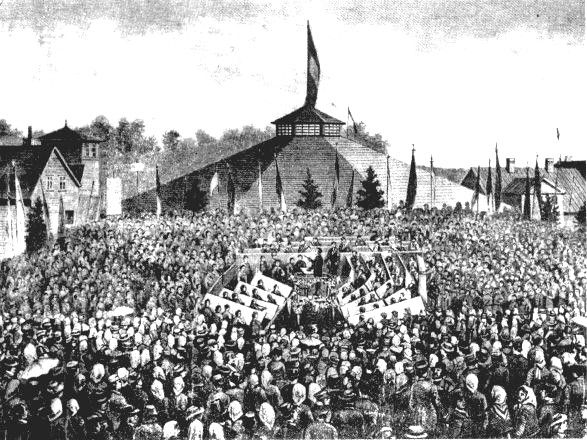Modern Era II
Thanks to the lobby of the Baltic Germans in the court of the Russian czar Alexander I, the Emperor ordered to re-open the University in 1802.
The 19th century was the peak of the Baltic German culture in Estonia and in Tartu. A number of well-known scientists of that period were Baltic Germans working at the University of Tartu, like Karl Ernst von Baer.
In the shadow of the Baltic German culture the first sprigs of the local Estonian culture emerged. Thanks to the initiatives and deeds of Faehlmann, Kreutzwald, Jannsen, Koidula, Jakobson and Hurt, Tartu became the centre of the National Awakening Movement.
The Estonian professional theatre and the tradition of Song Celebration festivals were also born in Tartu in late 19th - early 20th centuries.
By every decade more young men whose native language was „country language", i.e. Estonian, were immatriculated to the University. In 1884 they joined into an association, The Association of the Estonian Students, and took the colors blue, black and white for their tricolor flag.

The first Song Celebration festival was held in Tartu on 18.-20. June, 1869